Finding Mr Engels: Part 2
Friedrich Engels, standing there with his arms folded in a concrete frockcoat, could not look more out of place
It’s a hot day in May 2025 and the sun is blazing down outside the Home arts venue in Tony Wilson Place.
A group of office workers in short sleeves and white trainers are chatting over lunch at a row of trestle tables.
Nearby, a signboard is advertising a breakfast butty with a hot drink for £6.50 with unselfconscious aplomb.
Friedrich Engels, standing there with his arms folded in a concrete frockcoat, could not be more out of place.
He’s as impervious to the rays of sunshine as he is to the usual Manchester rain.
Joyless and grey.
I’ve walked across town today to take some photographs of him for a talk I’ll soon be doing about how Engels overlaps with my family history.
And I have to admit that I don’t really like the fact that he’s here.
Dear reader, I put a lot of time into writing these stories so you can enjoy them in under 10 minutes. If you’ve been enjoying the newsletter, consider going paid to help me keep it going. It’s just a few pounds a month, and it genuinely makes a difference. Click here to view your subscription options — you can unsubscribe any time, with one click.
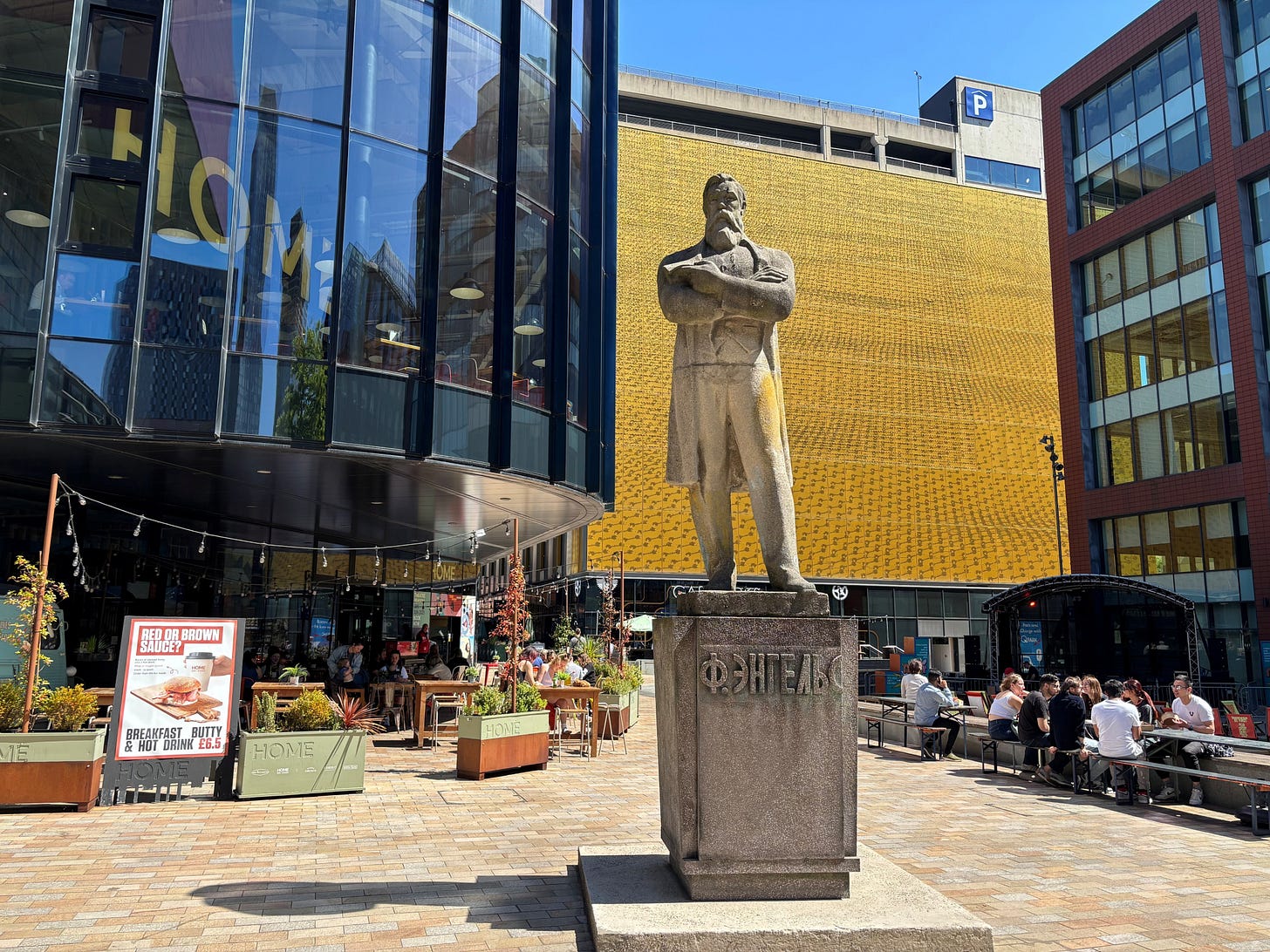
Okay, there is a comic irony in the fact that one of the fathers of Communism has been left gazing across at some of the most expensive apartments in Manchester.
But there’s also a darkness about this statue that runs blacker than the shadow it casts over the office workers in the square.
In 1989, in the dying days of the Cold War, I struck up a friendship with a boy my age from Poland whose uncle, the son of a wartime Spitfire pilot, lived near me in Manchester.
The lad was called Witek and his home was in the Polish port city of Gdansk, where striking dock workers from the Solidarity pro-democracy movement helped to lead the Poles on their march for freedom as the Berlin Wall collaped.
I kept the letters Witek wrote to me all those years ago on squared paper torn from his school maths books.
And, before visiting that statue of Engels, I discovered them again while looking for something in the loft.
This is the second in a series of stories about my journey to find Friedrich Engels in the streets of Manchester. You can read the other parts here:
In our letters, written by two teenage boys on different sides of what remained of the Iron Curtain, we discussed the Manchester music scene, Peter Shilton’s goalkeeping skills in an England v Poland World Cup qualifier and Witek’s dreams for the future.
As I sent Witek mix-tapes of the Happy Mondays and the Stone Roses, he sent me photographs of Lech Walesa, Poland’s first democratically elected president since 1926, and a collection Solidarity pin badges.
In one letter just after Christmas 1989, 14-year-old Witek writes about listening on his radio to the revolution happening in another East European country, Romania, as the dying Communist regime began shooting at pro-democracy protesters.
“I could hear the independent Romanian radio which was giving actual events from Bucharest,” he says.
“I could hear everything that had been happening in the streets of this city. There were sounds of firing and loud human screams.
“It impressed me very much because it was a real horror. I could imagine this place without any difficulties.
“But then, after all, it was great to hear ‘liberate’ from thousands of human throats.”
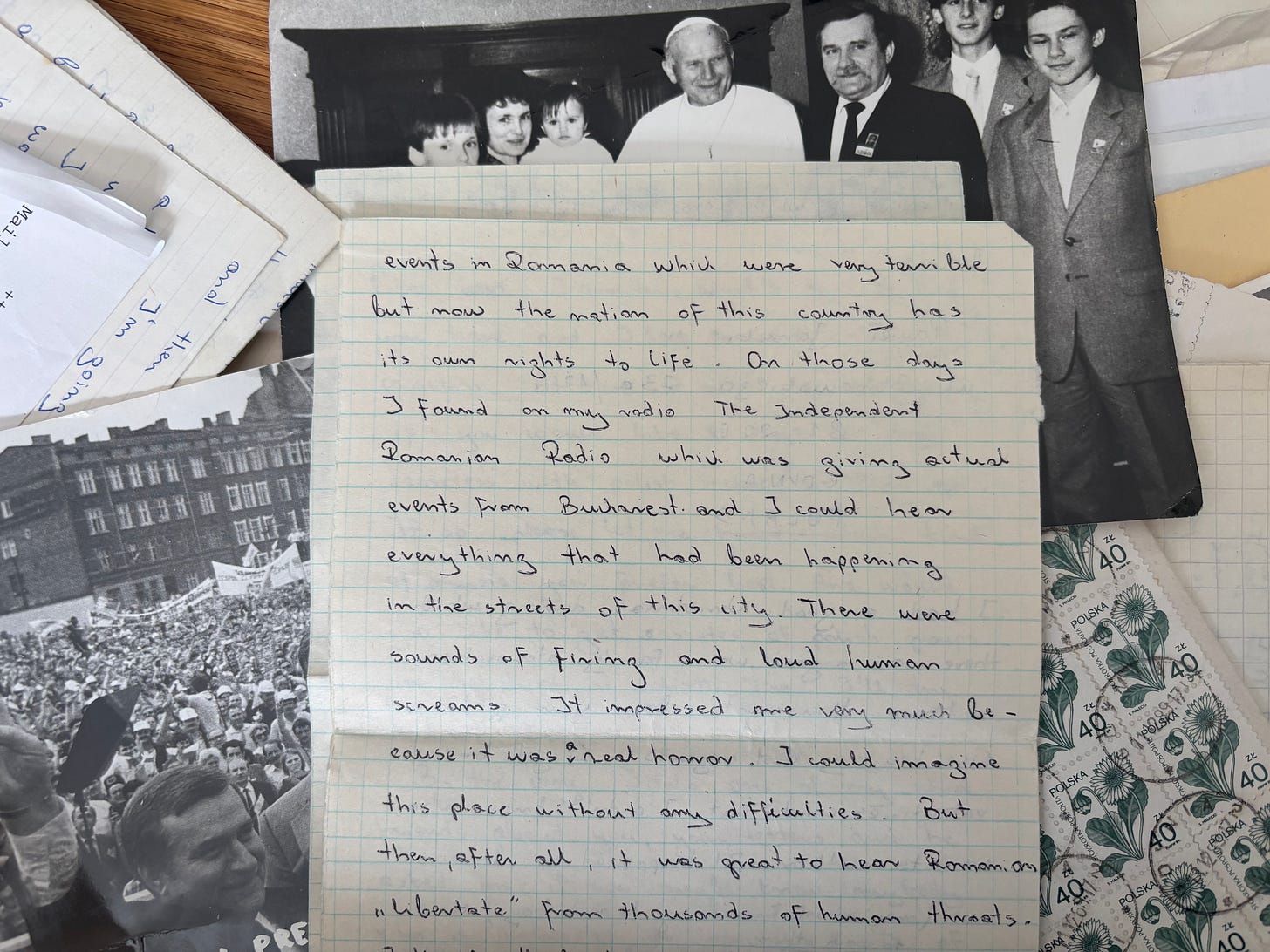
You have to stand in front of the statue of Engels in Tony Wilson Place to see it for what it really is — a mass produced piece of old Soviet propaganda.
Poured into a mould in around 1970, it was part of an army of concrete clones dispatched to towns and villages across the Eastern Bloc to remind people they were being kept under control.
These statues performed their quiet duty for the Soviet regime for decades — until they and their human makers were finally toppled.
The Manchester Engels was toppled too.
He was found by a Turner-nominated artist named Phil Collins on a rubbish tip in Ukraine after he had been cut in half and unceremoniously dumped during the country’s Euromaidan pro-democracy revolution in 2014.
Looking up at Engels, I can still see the line across his waist where he was put back together after being brought to Manchester.
On his legs I can also see the blue and yellow paint — the colours of the Ukrainian flag — that was daubed on there during the revolution.
I don’t recall anyone asking Mancunians if they wanted the statue to remain here permanently after it was erected during the Manchester International Festival.
Ask the city’s Ukrainian community though, whose brethren are still fighting for the freedom to choose their own destiny, and they will likely tell you that the statue is a symbol of repression.
And yet, here he is.
Still watching — with a cold, hard stare — over the office workers having their lunch in Tony Wilson Place.
Read the next chapter:
Engels’s Beard
The statue in Tony Wilson Place isn’t the only memorial to Engels around here.
There’s also a huge bust of Engels’s head that serves as an outdoor climbing wall at the University of Salford.
Known as Engels’s Beard, it was described as a “cynical hipster joke” by the Salford Star when it was erected.
The routes up it, named by student climbers, include Pinch the Bourgeoisie, Toe-Talitarian and Just Look at it from different Engels.
See if you can find it if you are ever passing.
But don’t ask for directions to Engels’s Beard or people might look at you a bit funny.
Over to you…
It’d be good to hear what you think about the Engels statue in Tony Wilson Place.
Do you like it, do you think it should be pulled down or should it be moved to an area of the city more associated with the real Engels?
Drop a line in the comments with your thoughts and take a quick vote in the straw poll below.
Have a great weekend!


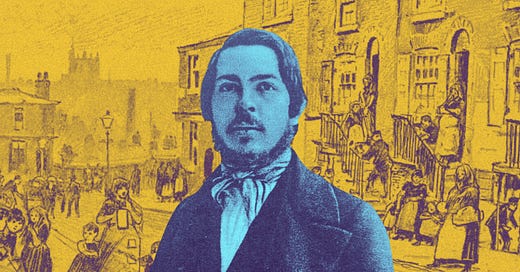



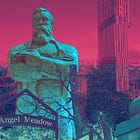


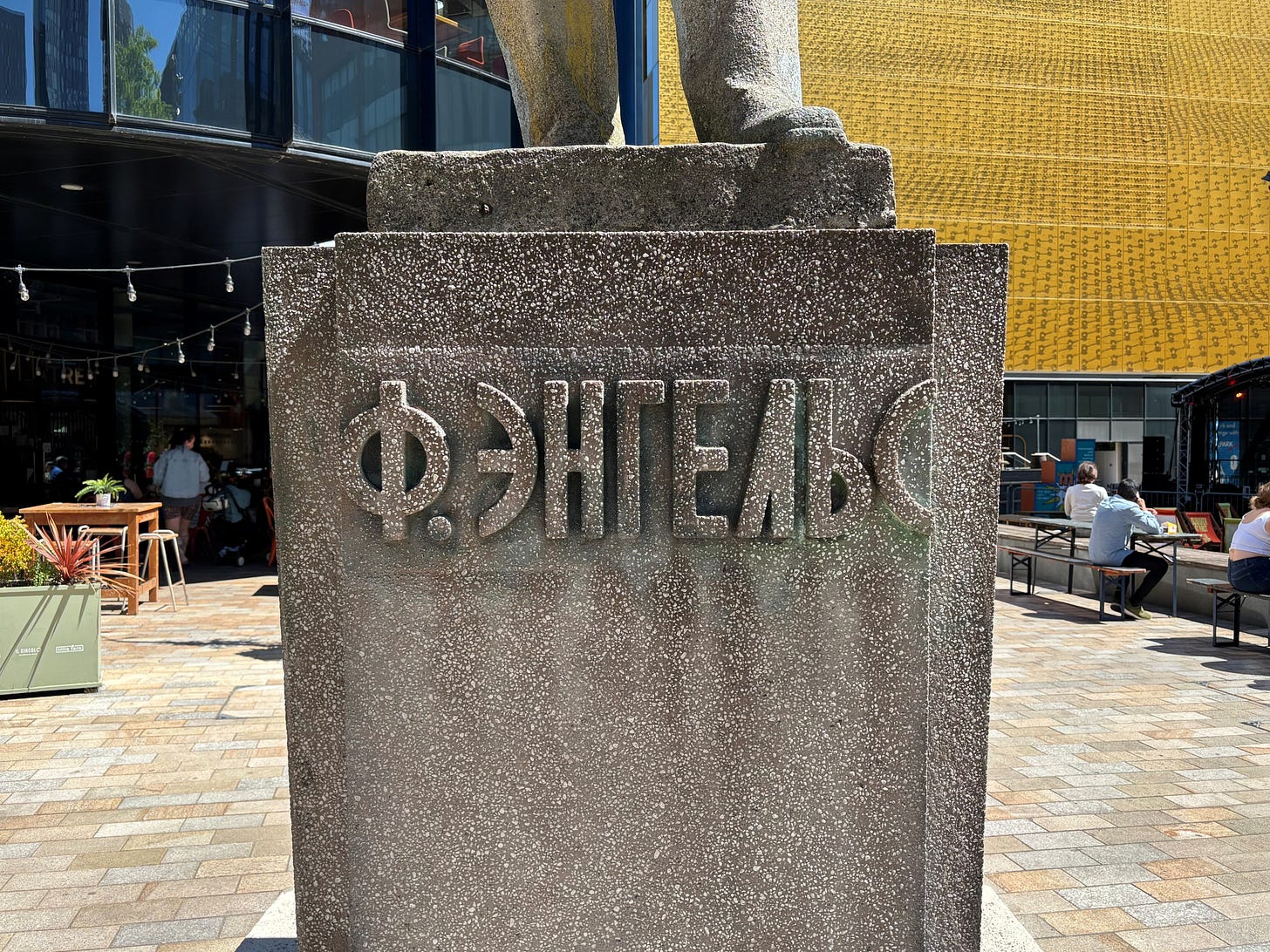
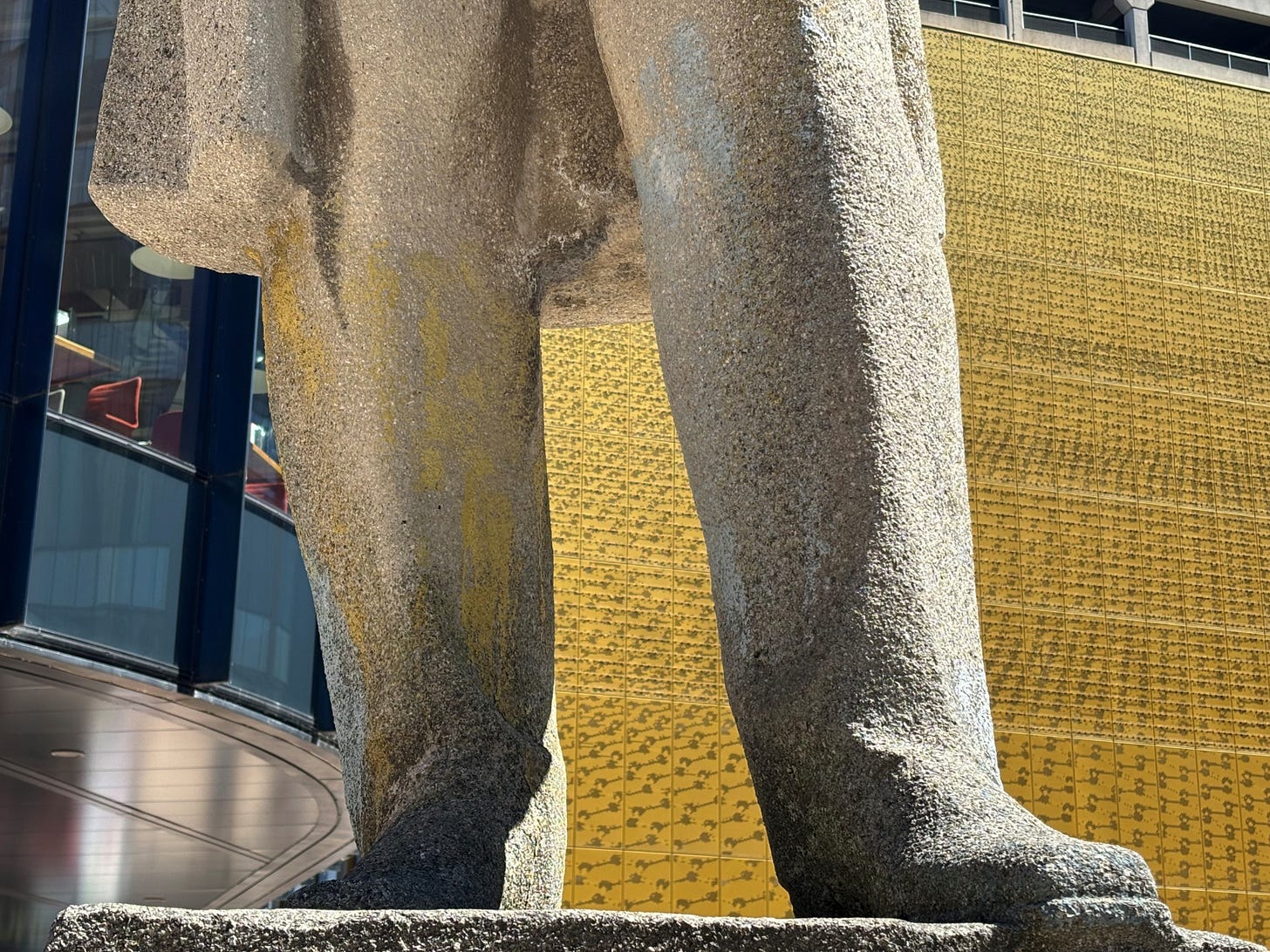
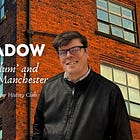

Great article Dean. I do feel the statue in its current position serves as a bit of a curiosity, and would be better off in Angel Meadow or The People's History Museum.
Appreciate that the statue itself is a symbol of Soviet repression, although I'm sure Engels never intended his doctrine to end up being used for such repression/totalitarianism and he should be remembered for highlighting the terrible conditions many had to endure, with unregulated capitalism causing similarly unjustified repression.
I can't understand why you have taken this stance Dean, againt Engels. He was a man of the people- the working people , and what he wrote showed the horrors of 19th century working life and living conditions in Manchester.
I was born and bred in Manchester but havent been back for a long time since my retirement in 2001. So I can't identify with the area of the city in which this statue has been placed and I didnt know where it had come from, but the fact that it commemorates someone who cared about how people managed to live in such appalling conditions in those days and recorded what he found for us to learn from, justifies its existence wherever it is positioned.
Angel Meadow was not the only impoverished area in the City and if the statue
promotes queries and discussion in what might seem these days a rather incongruous position, so much the better.